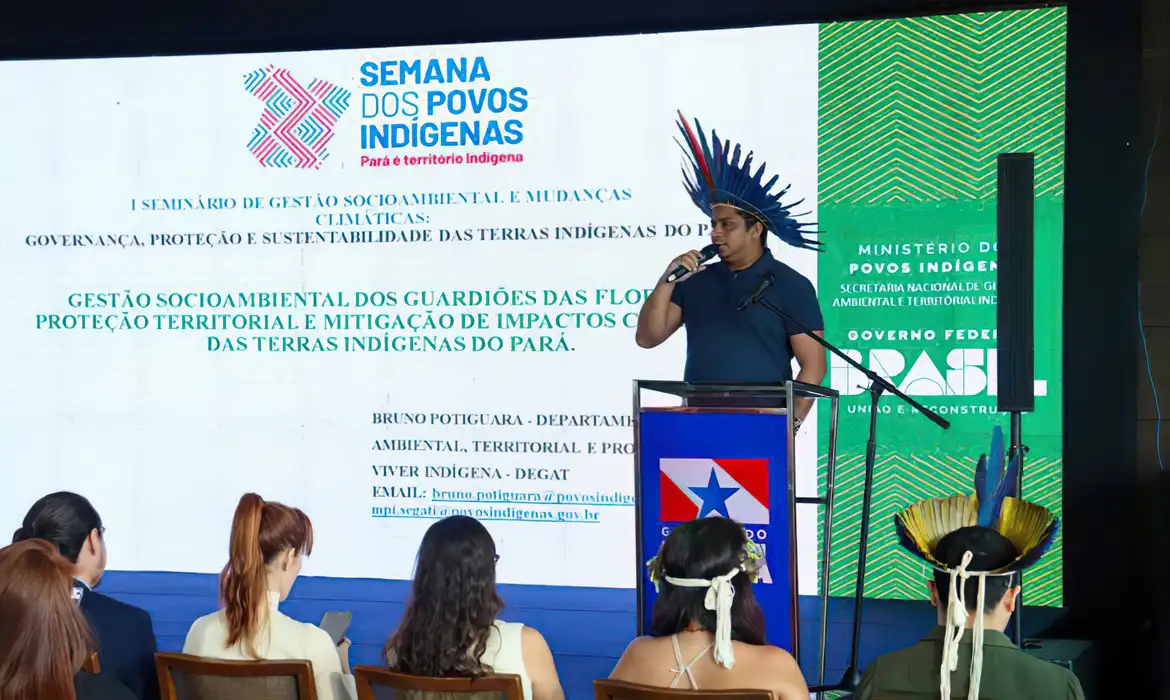
Event started this Thursday (18) and continues until Sunday (21)Daniel Lima/Semas
Published 04/19/2024 17:20
Carried out by the State Secretariat for Indigenous Peoples (Sepi), with support from the federal government, it reinforces the role of indigenous peoples in environmental preservation and combating climate change. In addition to debates on topics such as sustainability, forest management, family farming and traditional indigenous medicine, the program includes cultural presentations, workshops, service provision and a crafts fair.
The event also serves as preparation for the 30th Conference of the Parties to the United Nations (UN) Framework Convention on Climate Change (COP 30), scheduled to take place in the capital of Pará in November 2025. The conference is expected to attract around 50 thousand visitors.
“The idea is that the people of Belém welcome indigenous peoples, not just this week, but that, increasingly, Pará becomes indigenous territory; that recognizes this (indigenous) identity, its ancestry. And that we can move towards COP 30 like this, holding one of the biggest environmental events on the planet”, stated state secretary Puyr Tembé, in a statement released by Sepi.
Demography
“The indigenous population in Pará has a heterogeneous distribution, with a concentration in certain regions, which requires specific strategies for each community”, point out those responsible for the analysis prepared based on the results of the last two Demographic Censuses (2010 and 2022) released by the Institute Brazilian Geography and Statistics (IBGE).
In the last period, in Pará, the number of people who declare themselves indigenous increased by 58%, going from 51,217 people, in 2010, to 80,980, in 2022. As a result, indigenous people are now, officially, 1% of the population of Pará. The “strong demographic expansion” recorded in the state followed the national trend. In the country, the number of Brazilians who identify as indigenous grew almost six times between 1991, when they were just over 294 thousand, and 2022, the year in which they were already more than 1.694 million.
Although the number of indigenous people from Pará aged 60 or over increased by 118% between 2010 and 2022, the state’s indigenous population is mostly young: practically half (49.7%) of it is between 15 and 49 years old. The data also points to parity between females (40,530) and males (40,450). The situation, however, represents a reversal in demographic patterns, since, according to Fapespa, in 2010, men were the majority.
Preservation
“We highlight the State Plan for the Recovery of Native Vegetation and its construction process, with the active participation of (original) peoples and traditional communities”, commented, in a note, the state deputy secretary of Water Resources and Climate, Raul Protázio. The representative of the Ministry of Indigenous Peoples, Bruno Potiguara, director of Territorial Environmental Management and Promotion of Indigenous Good Living, highlighted the visibility that events such as the 1st Indigenous Peoples Week provide. “It is very interesting to do this work thinking about the context of the entire state, thinking about territorial protection, the management of its territories”.
